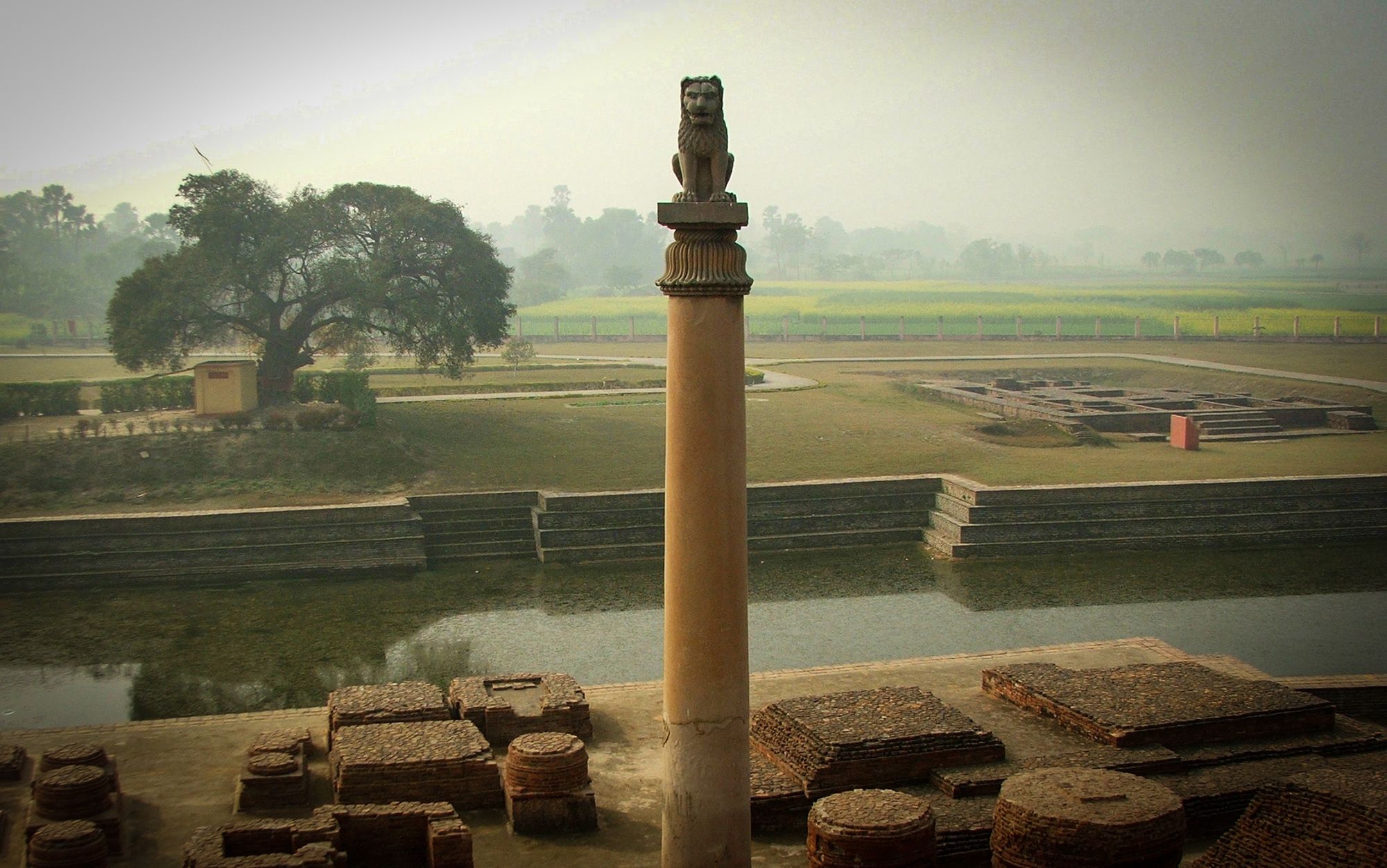by SONAM KACHRU

Being good is hard. How an ancient Indian emperor, horrified by the cruelty of war, created an infrastructure of goodness
In the Khyber valley of Northern Pakistan, three large boulders sit atop a hill commanding a beautiful prospect of the city of Mansehra. A low brick wall surrounds these boulders; a simple roof, mounted on four brick pillars, protects the rock faces from wind and rain. This structure preserves for posterity the words inscribed there: ‘Doing good is hard – Even beginning to do good is hard.’
The words are those of Ashoka Maurya, an Indian emperor who, from 268 to 234 BCE, ruled one of the largest and most cosmopolitan empires in South Asia. These words come from the opening lines of the fifth of 14 of Ashoka’s so-called ‘major rock edicts’, a remarkable anthology of texts, circa 257 BCE, in which Ashoka announced a visionary ethical project. Though the rock faces have eroded in Mansehra and the inscriptions there are now almost illegible, Ashoka’s message can be found on rock across the Indian subcontinent – all along the frontiers of his empire, from Pakistan to South India.
The message was no more restricted to a particular language than it was to a single place. Anthologised and inscribed across his vast empire onto freestanding boulders, dressed stone slabs and, beginning in 243 BCE, on monumental stone pillars, Ashoka’s ethical message was refined and rendered in a number of Indian vernaculars, as well as Greek and Aramaic. It was a vision intended to inspire people of different religions, from different regions, and across generations.
‘This Inscription on Ethics has been written in stone so that it might endure long and that my descendants might act in conformity with it,’ Ashoka says at the end of the fifth edict. In the fourth, he speaks of his ethical project progressing ‘until the end of the world’, though one year later in the next edict he offers a sobering qualification; the project can succeed only as long as it is taken up and continued – ‘if my sons, grandsons and, after those, my posterity follow my example until the end of the world’.
As it turns out, Ashoka’s influence did outlast the shortlived Mauryan empire. Along with Siddhattha Gotama, the Buddha, whose religion Ashoka did much to establish as a global phenomenon, Ashoka was one of the first pan-Asian influences. King Devanampiya Tissa of Sri Lanka (c247-207 BCE) wanted to emulate him, as did Emperor Wu of China (502-549 CE); Empress Wu Zetian (623/625-705 CE) even wanted to outdo him. And on 22 July 1947, days before India achieved formal independence from Great Britain, Jawaharlal Nehru, soon to be the country’s first prime minister, proposed to the Constituent Assembly of India that the independent nation adopt an Ashokan emblem – the wheel of a chariot – for its new flag.
Aeon for more
